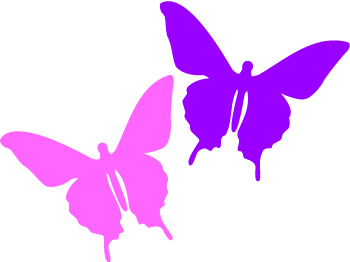Butterfly populations are a very good indicator of the health of an area's ecosystem !!
Blue Nawabs Inhabit urban parks, gardens, forested areas, and mangrove regions.
They play a crucial role in the pollination of many plants, contributing to the ecological balance of their native regions.
They are more active in early morning, displaying a stunning spectacle of flitting and circling about in the forest undergrowth.
They stand out due to their vivid blue coloring paired with black and white spots.
The ventral side of its wings, however, showcases a more complex, mosaic like pattern of black, white, and orange.
Their bodies are commonly black with a few blue spots. This lustrously colored body, coupled with the insect’s strong and rapid flight pattern, makes it a fascinating butterfly to see.
Their wings, when open, display white median bands set against a backdrop of vivid blue.
The closed wing view offers a silvery ventral side adorned with light brown and violet to purple patterns.
The presence of two pairs of tails on the hindwings adds to their elegant, powerful and graceful flights across their habitat.
Sexual dimorphism is subtle, with the primary difference being size. Females are generally larger than their male counterparts.
Males have a vibrant, iridescent blue color on the upper side of their wings. This shade extends edge to edge. The ventral side of their wings has a mix of navy, brown, and white spots.
Females, have a duller color.
Their wings don’t cast the same iridescent blue hue that the males do. Instead, they sport a rich brown shade.
They also have a series of jagged, white bands.
Wing edge curvature is sharper in females than males.
When resting, they typically camouflage themselves by closing their wings, concealing the vibrant display and exhibiting the muted underside.
Courtship involves a series of flight patterns and demonstrations between the male and female butterflies.
The female, if sufficiently interested, will conclude this phase by accepting the male partner for mating.
Once the male has gotten the female’s attention, he will release a unique scent. This distinct and captivating chemical scent, released from the androconia, a specialized set of scales, is specifically designed to entice the females.
Males display an attractive flight pattern to allure the female. These strategized flight movements are further polished off with the open flutter close sequences.
If the courtship was successful, the female Nawab will lay her fertilized eggs on the host plant.
Blue Nawabs employ both Batesian and Mullerian mimicry to avoid predation.
They also employ ‘Dead Leaf’ mimicry.
Using this strategy, they fake their death by staying motionless with wings closed, resembling a crumpled leaf. Camouflaged against the forest floor, they become almost invisible to predators.
Adults have a lifespan of up to a month.
* Habitat destruction is the most prominent threat to Blue Nawabs.

Diet: caterpillars feed fervently on the host leaves, typically the Mallotus and Macaranga species of plants.
Diet: adults dine predominantly on flower nectar. Males occasionally consume decomposing animal matter and overripe fruits. Also, they take tree sap, which provides them with minerals and nutrients not typically available in their nectar and fruit diet,
Wingspan: 9.2 – 11.6 cm / 3.8 – 4.6 “
Family: Nymphalidae
** As menbers of the Brush Footed (Nymphalidae) family, they use their pair of shorter front legs for food tasting, and their two pairs of longer rear legs for propulsion.

The single biggest threat to butterfly survival is habitat destruction!!



